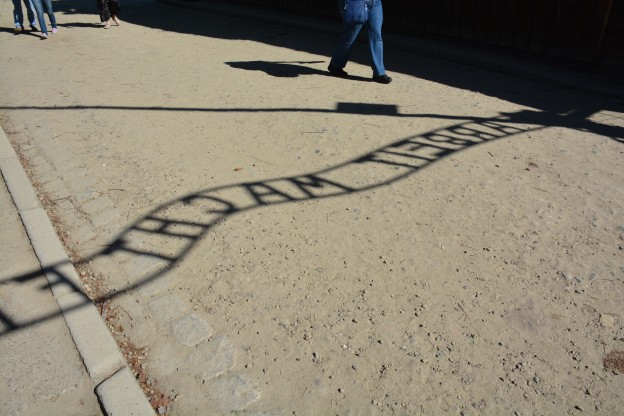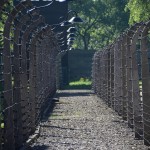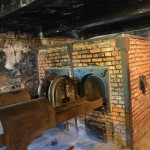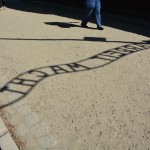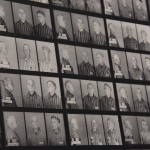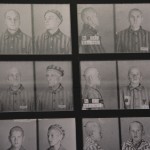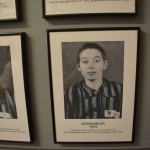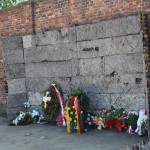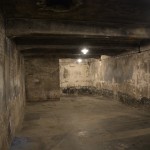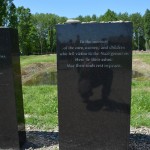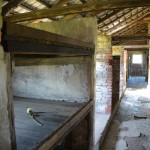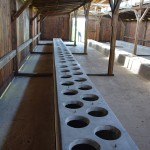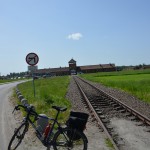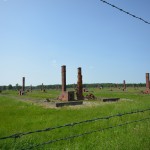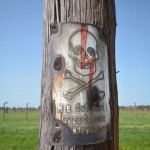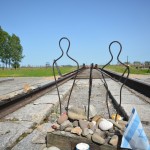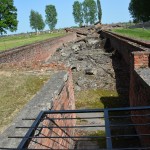Next up on the tour of terror: Auschwitz. Auschwitz actually refers to several camps located near the Polish town of Oświęcim. I was able to tour two camps: Auschwitz I, the original and smaller camp retrofitted from Polish army barracks; and Birkenau (Auschwitz II), a much larger overflow camp created in a giant field 2km away.
The Nazis experimented with gas chamber and cremation oven design at Auschwitz I, but Auschwitz II was really where they implemented an industrial scale version of their “Solution.”
This is the second WWII Concentration Camp complex I visited, and I found my impressions formed mainly in relation to my first visit at Terezin. Terezin was an ancient fortress, long used both before and after the Holocaust for terror. Terezin isn’t on the main tourist circuit and you can wander the grounds at your own pace unguided. Auschwitz I entrance requires guided tours most of the day (the guides are excellent and very knowledgeable). Birkenau is included in the tour but I also returned on my own later in the day.
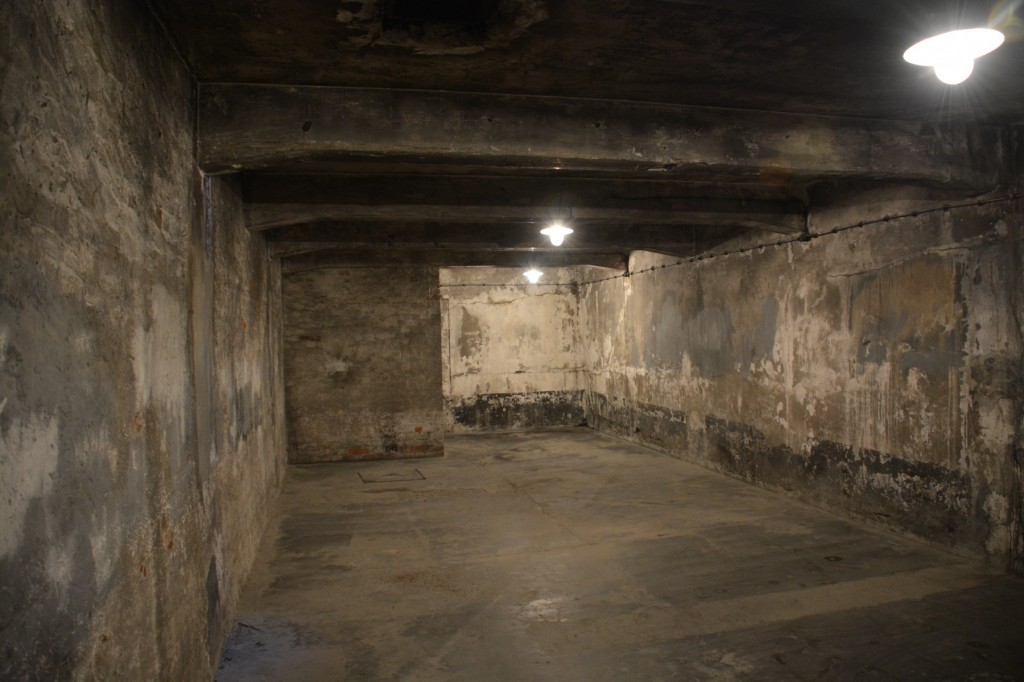
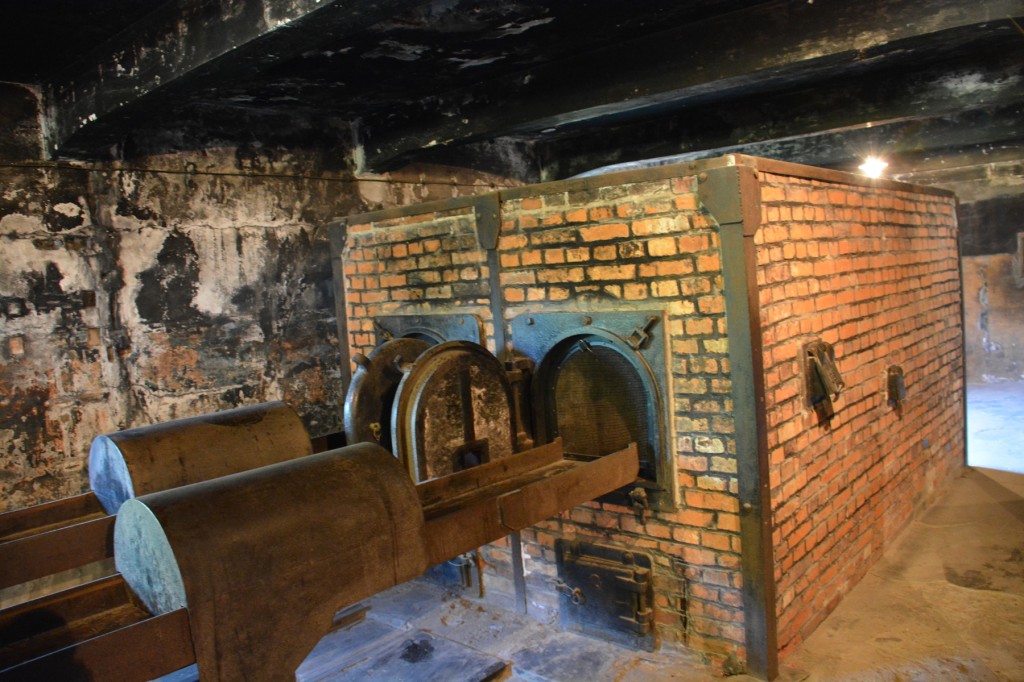 Being built out of brick and stone, most of Terezin remains standing. My entire visit evoked ghosts and an invisible cloud of evil with empty buildings and no other people around. The only part of Auschwitz which really provoked a similar feeling was the single extant gas chamber and crematorium. Walking into the chamber, seeing the ceiling slots where the Zyklon B canisters were dropped and then (unlike the victims) being able to walk out of the chamber to the room where the ovens were used gave perceptible chills. And, you could tell by the way others on the tour reacted that this was a shared feeling.
Being built out of brick and stone, most of Terezin remains standing. My entire visit evoked ghosts and an invisible cloud of evil with empty buildings and no other people around. The only part of Auschwitz which really provoked a similar feeling was the single extant gas chamber and crematorium. Walking into the chamber, seeing the ceiling slots where the Zyklon B canisters were dropped and then (unlike the victims) being able to walk out of the chamber to the room where the ovens were used gave perceptible chills. And, you could tell by the way others on the tour reacted that this was a shared feeling.
The other parts of the Auschwitz I tour were informative (lots of facts, dates, numbers, pictures) but didn’t have this same feeling.
 Birkenau was an entirely different experience. Here the term “camp” is apt. Imagine a giant, cleared field (~750 acres) laid out with a perfect barbed wire grid and regularly spaced barrack structures. Most of the originals were made of wood, so the only parts left standing are the brick chimneys and a few reconstructed structures. The entire space is bisected by a railroad track which is how prisoners were brought into the camp and the last thing most saw before they were immediately herded to their death. Unlike Terezin, Birkenau wasn’t build to be permanent. The barbed wire posts, the wooden building, it all looks as if the Nazis expected to be able to completely annihilate their enemies in the space of a few years at which time the camp would be superfluous.
Birkenau was an entirely different experience. Here the term “camp” is apt. Imagine a giant, cleared field (~750 acres) laid out with a perfect barbed wire grid and regularly spaced barrack structures. Most of the originals were made of wood, so the only parts left standing are the brick chimneys and a few reconstructed structures. The entire space is bisected by a railroad track which is how prisoners were brought into the camp and the last thing most saw before they were immediately herded to their death. Unlike Terezin, Birkenau wasn’t build to be permanent. The barbed wire posts, the wooden building, it all looks as if the Nazis expected to be able to completely annihilate their enemies in the space of a few years at which time the camp would be superfluous.
And that was my main takeaway from Auschwitz: the industrial scale of the Holocaust. Human history is replete with evil. Every era is filled with wars and torture and death. But, the Nazis were the first to combine this instinct with the efficiency of logistics. 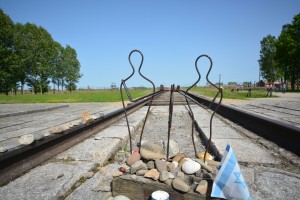 Census records, registration cards and centralized rolls allowed them to meticulous track down every single individual targeted for death. Without a comprehensive railroad network, it would have been impossible to aggregate the more than 6 million people in concentration camps (Johnson finds evidence that the railway timetables gave absolute priority to transporting prisoners even at the expense of the war effort). And, finally, Auschwitz itself is an industrial killing machine. Like a modern, commercial agribusiness, Auschwitz was built for one purpose. But, instead of profit it maximizes death.
Census records, registration cards and centralized rolls allowed them to meticulous track down every single individual targeted for death. Without a comprehensive railroad network, it would have been impossible to aggregate the more than 6 million people in concentration camps (Johnson finds evidence that the railway timetables gave absolute priority to transporting prisoners even at the expense of the war effort). And, finally, Auschwitz itself is an industrial killing machine. Like a modern, commercial agribusiness, Auschwitz was built for one purpose. But, instead of profit it maximizes death.
